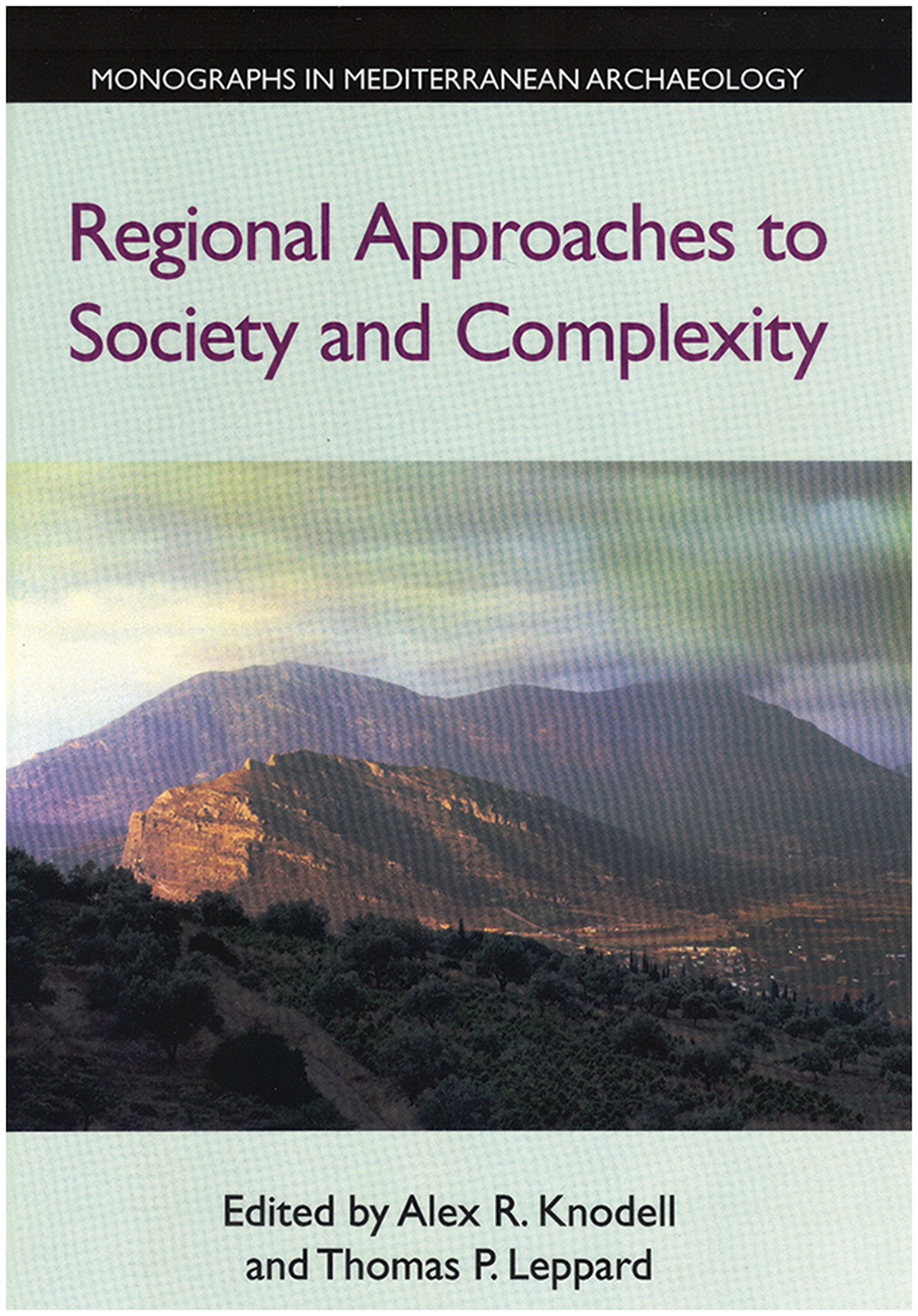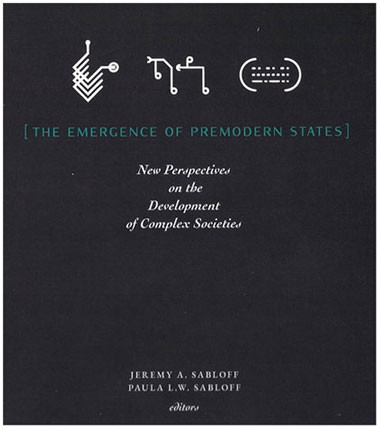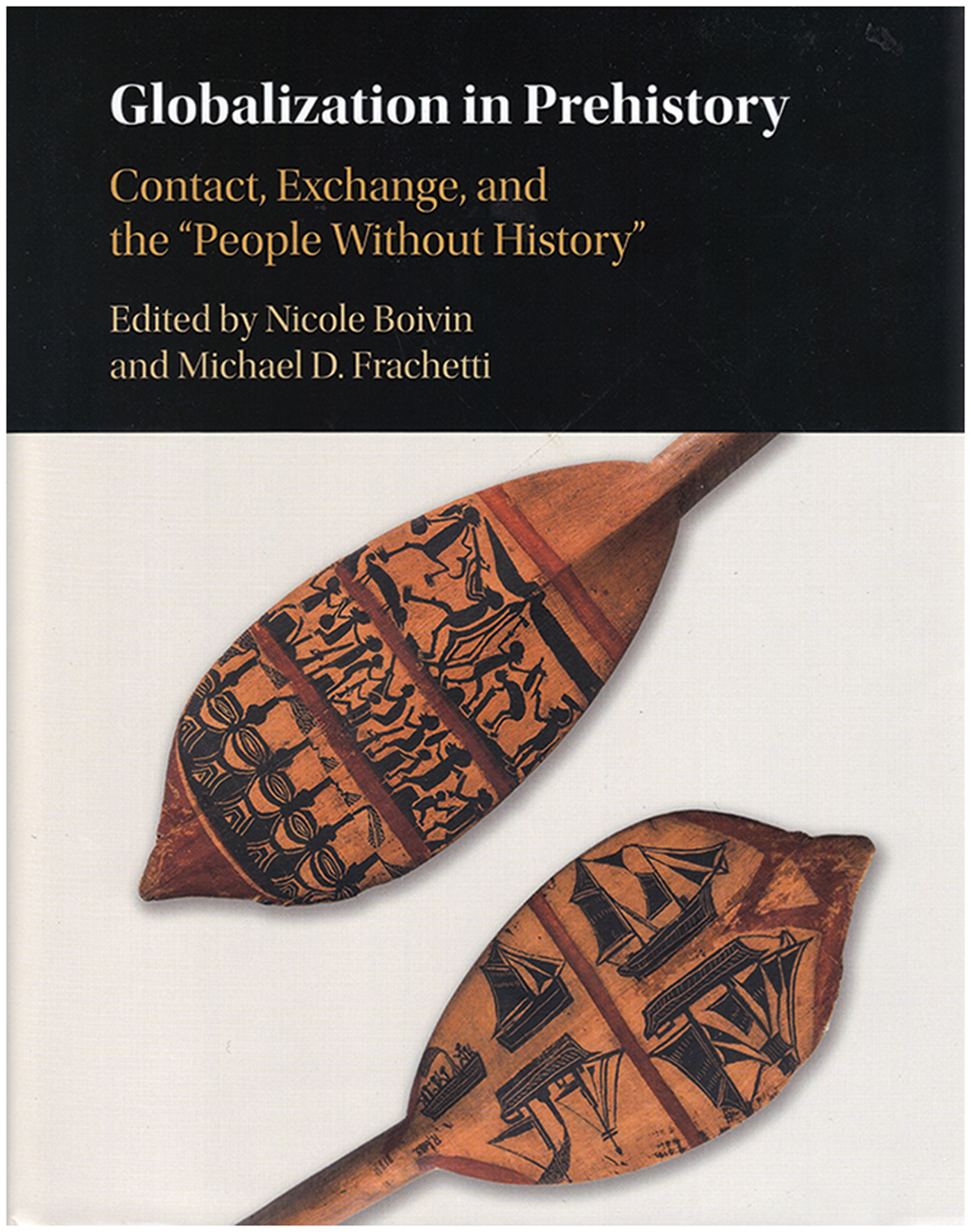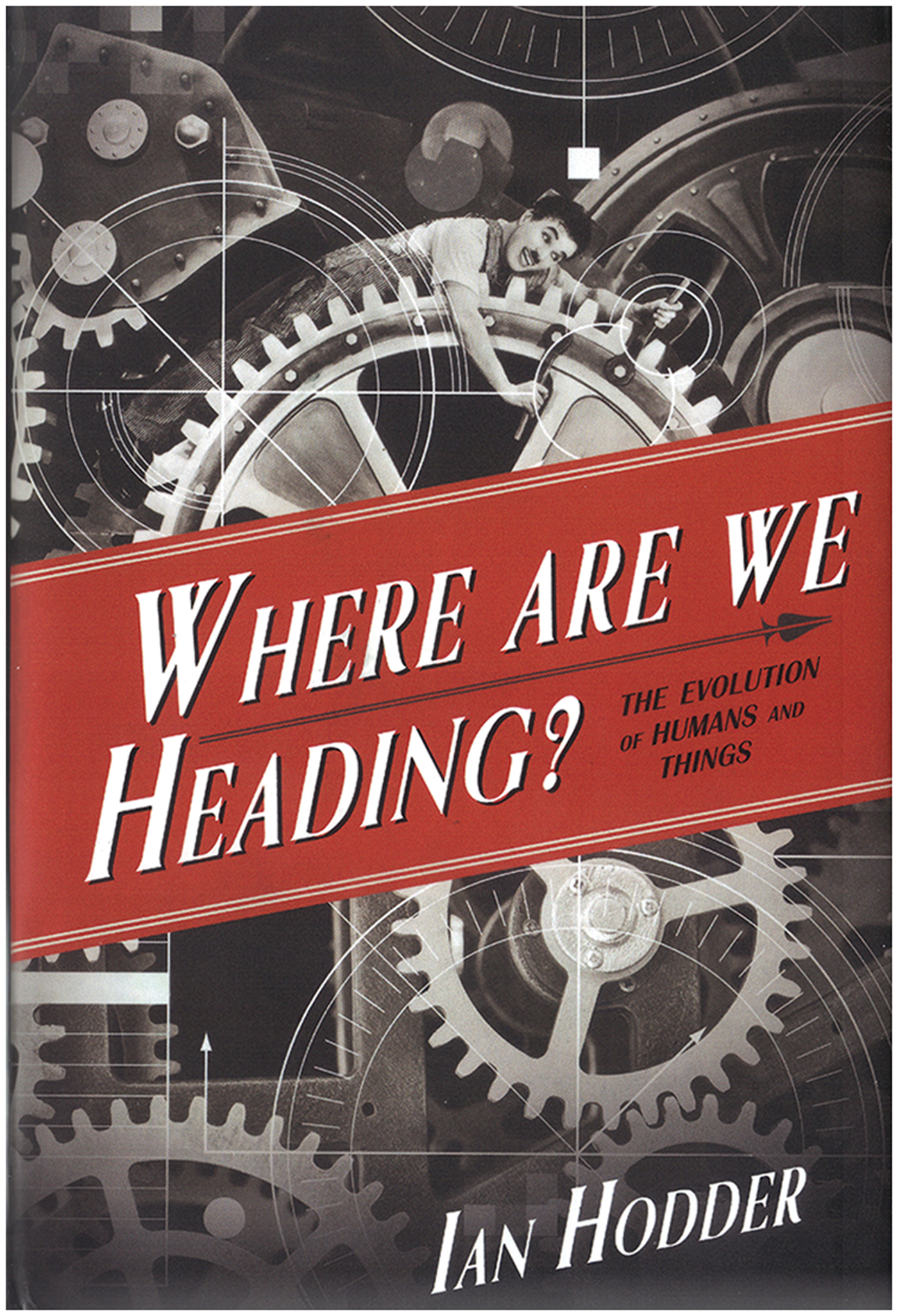And now, the end is near, and so I face the final curtain. Or at least the final NBC, as I am stepping down as Reviews Editor to spend more time with my research. I would like to pay tribute to all of the authors who have agreed to write book reviews and review articles during my tenure. In an academic environment, especially in the UK, which increasingly prioritises particular sorts of research outputs over wider scholarly activities, we should appreciate the time taken out of busy schedules to provide thoughts on the work of others. I have really enjoyed collaborating with you all!
And so to the books. This issue, we initially look at three volumes that take very different approaches to understanding early complexity, and particularly the state. Our fourth and final volume attempts something even broader, tackling the question of progress across the entire human past.
States and the stateless
Knodell, Alex R. & Leppard, Thomas P. (ed.). 2018. Regional approaches to society and complexity (Monographs in Mediterranean Archaeology 15). Sheffield: Equinox; 978-1-78179-739-6 £90.
Sabloff, Jeremy A. & Sabloff, Paula L.W. (ed.). 2018. The emergence of premodern states: new perspectives on the development of complex societies. Santa Fe (NM): SFI; 978-1-947864-03-0 $9.95.
Boivin, Nicole & Frachetti, Michael D. (ed.). 2018. Globalization in prehistory: contact, exchange, and the ‘people without history’. Cambridge: Cambridge University Press; 978-1-10857-327-6 £90.

Our first volume, Regional approaches to society and complexity, is an edited collection in honour of John F. Cherry, of Brown University. The emphasis is on Mediterranean archaeology, but a significant final section, actually comprising the majority of the book, moves us into a wider geographic range, including Central America and the Caribbean. After a short Introduction, in which the editors usefully reprise the history of regional studies and provide some unifying definitions, the first section, comprising four chapters, focuses on the prehistoric Aegean and its connections to other regions. Bennett tackles the relationship between figurative art and writing, asking why there is no tradition of depicting images of elites alongside self-aggrandising texts in the Aegean Bronze Age as there is in the Near East. In a complementary pair of chapters on the emergence of complex polities, Manning uses a massive dataset of radiocarbon dates to assess the pace of social change on Crete, while Galaty suggests an explanatory mechanism based on the circulation of prestige goods. The latter chapter draws an intriguing parallel with modern Albania, where prestige goods such as white sugar, coffee and guns were fundamental to honour systems and tribal culture under the Ottomans. Once these goods were restricted by the emergent independent state of Albania in 1912, the social systems that they supported withered away. Galaty argues that Egyptian imports functioned in similar ways in Crete, but in both cases, the social and symbolic significance of the relevant objects developed locally.
The second section moves to a wider canvas, involving the entire Mediterranean. Again, the tension between local and regional scales is present, as in Smith and van Dommelen's chapter comparing monuments in Sardinia and Menorca, traditionally seen as marginal to the wider Mediterranean world. Refreshingly, they do not find that these supposed marginal zones were in fact vibrant hubs, but rather seek to show that such overlooked areas can be used to foreground local practices as interesting in their own right. The third section is the least coherent overall, but several of the contributions work well in groups. Broodbank asks ‘Does island archaeology matter?’ and, perhaps unsurprisingly in the circumstances, answers with an emphatic yes, at the same time calling for a quite specific form of comparative analysis that he terms “deep island histories” (p. 200). Fitzpatrick echoes this call, and shows how it might be put into practice in the Caribbean and Pacific, while Ryzewski explores the possibilities for regional archaeological survey in the Lesser Antilles. Witmore and Knapp take contrasting approaches to non-human agency, the former emphasising the role of ‘things’ through a symmetrical archaeological approach, and the latter arguing that such an approach ignores a serious and meaningful difference between the capacities of humans and objects. Each section is prefaced by a short Introduction by the editors, and these, along with the Conclusion, helpfully draw out the overarching themes of the volume.
As others have pointed out (McGuire 2014), the Festschriften genre has a range of recurring problems. Contributors and editors are usually well known to one another, leading to an understandable desire both to include everyone and refrain from strong editorial intervention. In attempting to reflect the range of interests of a particular scholar, collections can become something of a smorgasbord, such that the full range may be of interest only to the individual being honoured! Finally, there is a tendency for established scholars to place research that might not be considered top quality in edited collections. Although this volume is not immune from any of these issues, it is a high-quality publication that contains some interesting and insightful papers. Cherry's career-long emphasis on a comparative approach combined with the work of the editors brings some coherence to the plethora of places and periods touched upon in the individual chapters, and the Introduction and conclusions draw out overarching themes well. It is certainly a fitting tribute to a sparkling career.

Our second volume, The emergence of premodern states: new perspectives on the development of complex societies, is also concerned with the comparative analysis of prehistoric societies, in this case in combination with ideas and methods drawn from complexity science. The participating scholars are all associated with the Santa Fe Institute, an interdisciplinary centre for complex systems research involving disciplines from the natural and social sciences. As a result, the volume presents a highly integrated set of papers, many of which make heavy use of quantified data and various types of computational modelling. Sabloff's introductory chapter sets the scene, describing how the combination of large bodies of new data and novel computational techniques are providing new opportunities for research, but lamenting the absence of theoretical models capable of making full use of either. Complex systems theory may fill this gap, although Sabloff neglects to provide a specific definition of what this entails.
Two chapters, by Wright and then by Fortunato, further elaborate on the history of the study of urban states. The meat of the book lies in the four chapters in ‘Part II: new research’. Here, Sabloff and Cragg, building on the work of anthropologist Ralph Linton, compare the organisation of people in a range of societies through the idea of status-and-role. By quantifying the types of rights and duties required in state and non-state societies as diverse as Mesopotamia, Benin, the Aztec Empire and Shang China, they are able to make comparisons between seemingly disparate social organisations. Their study yields some intriguing results. For example, they find that “Protohistoric Hawai‘i institutionalised most of the same statuses and roles as other premodern states, and therefore should be considered one” (p. 94). Hooper et al. use agent-based modelling to examine how competition for resources might lead to hierarchies in certain circumstances but not in others. They are able to show that hierarchy, at specific size thresholds, becomes a much more efficient way of organising collective production. Kohler et al. also use agent-based modelling. By constraining possible courses of action by individual households, they are able to demonstrate different levels of path-dependency at a macroscale, offering the possibility of differentiating between process and history in future studies. Finally, Ortman, Blair and Peregrine employ a coding approach to 289 ‘archaeological traditions’ from across the world, and use these to make extremely broad comparisons through time. They are able to show correlations between increasing complexity and increasing diversity of roles, possibilities for energy capture and rates of cultural change. Increasing complexity does not, however, seem to correlate with greater health among a society's population. The final section of the book includes three, single-authored chapters proposing future directions. Ortman draws on what he terms the post-neo-Darwinian synthesis in biology to develop the concept of ‘cultural genotypes’, defined as “conceptual metaphors that map […] the experience of closeness onto relationships with experientially distant persons” (p. 250). Peregrine also borrows from biology, using ‘morphoscapes’ to understand why certain sorts of social formations, including states, are broadly similar across different cultures. The final chapter, by Sabloff, describes the different ways in which anthropologists have approached the topic of state formation, and situates complex systems approaches as a major contributor.
Unsurprisingly, considering it is concerned with using complexity science to understand complex societies, this is a complicated book! Especially in the middle chapters, the mathematical and conceptual apparatus are somewhat bewildering, and could perhaps have been parsed for readers who may not have an appropriate level of background knowledge. Certainly in a British context, where many archaeology departments have scrapped even basic modules on statistics, a lot of readers will struggle to understand the analyses, let alone recreate them, and this may restrict the reach of the volume. This would be a significant loss because the insights gained from the different chapters are startling, and demonstrate the incredible power of complexity science. At the same time, such approaches could also benefit from wider contextualisation in the more ‘social’ end of the social sciences. For example, Ortman's chapter on cultural genotypes essentially argues that to reach a certain level of complexity, a society must become capable of generating an inclusive conceptual metaphor. This immediately brought to mind Benedict Anderson's seminal (1983) work on ‘imagined communities’ and the enormous body of scholarship it has generated, none of which is cited by Ortman. This is not to criticise the author—one cannot be an expert on everything, and the chapter in question is already impressively interdisciplinary—but to point out that there are potentially fruitful dialogues to be had between complexity science and more traditional anthropological and historical approaches.

The final volume in this section, Globalization in prehistory: contact, exchange, and the ‘people without history’ takes a rather different tack in examining complexity in the past. The ‘people without history’ of the title, a phrase borrowed from Marx and Engels by way of the historian Eric Wolf, are the “nomads, pastoralists, fishers, foragers, pirates and traders” (p. 1) who lived outside the margins of urbanised and agrarian states and empires. The 12 chapters that follow the brief Introduction cover an enormous range of periods and places, often at scales that make the locations difficult to explain in today's terms. Three chapters cover parts of the Middle East; Southeast Asia and Central Asia receive two each, while western China, southern Africa, South Asia and Melanesia also feature. The book is arranged loosely chronologically, which means we jump from place to place. All of the chapters are written or co-written by leading scholars in the relevant fields, and all are readable, coherent, rigorous and interesting.
The short Introduction is largely descriptive. With exceptions, the following chapters fall into two main categories; those that discuss where and how the long-distance movements of material culture and ideas can be counted as a form of globalisation, and those that argue that supposedly peripheral people and regions had greater effects on wider systems than previously considered. Carter's chapter on the Ubaid phenomenon and that of Frachetti and Bullion on mortuary practices are both good examples of the first group, emphasising the homogeneity of certain aspects of social practice over large scales despite diversity in other spheres. The second group includes chapters by Dumitru and Harrower (on Oman and Ethiopia), Morrison (on South Asia), Denham, and Hoogervost and Boivin (both on Island Southeast Asia) and Seland (on the Syrian caravan trade). All foreground the importance of small-scale communities, often leaving limited archaeological footprints, in providing and moving commodities into much wider exchange networks. Globalisation as a concept is almost absent from some of these discussions, such as Seland's, but useful treatments are included in chapters by Jaffe and Flad, and by Lilley.
The latter's wide-ranging chapter serves as something of a conclusion, but throughout there is a frustrating lack of connection between the different case studies presented. Are there more generalisable rules to be drawn out here? For example, reading through the chapters I was struck by the fact that ecology seems to play a significant role in the forms of connection, such that tropical forest regions facilitate networks of exchange but less integration in comparison with steppe landscapes and even mountainous regions. It is clear from this volume that both globalisation and the ‘people without history’ merit attention, and are beginning to receive it. Hopefully, future volumes will begin to compare between the disparate case studies presented here.
Entangled up in blue
Hodder, Ian. 2018. Where are we heading? The evolution of humans and things. New Haven (CT): Yale University Press; 978-0-30020-409-4 $27.50.

Where are we heading? The evolution of humans and things, by Ian Hodder, is a slim book addressing a big question: namely, does human history (and prehistory) have a direction? Attempts to answer this question can be split into two different categories. The oldest, dating back at least to the Scottish Enlightenment and perhaps to the Classical world, rests on the notion of progress, that humans are always on a “slow, gradual, and necessary ascent to some end” (p. 20). During the eighteenth and nineteenth centuries, the end in question was often associated with Western colonial powers, meaning societies that had not attained the same level of ‘progress’ could justifiably be ‘civilised’ through imperial conquest. Social evolutionary theories that divide ancient and modern societies into band, tribe, chiefdom and state represent the more palatable end of the ‘progress’ spectrum, as do more recent studies focusing on greater efficiencies in energy capture or, more nebulously, ‘increasing complexity’. Hodder discusses these theories in Chapter 2, arguing that they are inadequate for a variety of ethical and empirical reasons, and because they assume a desire for progress as both a cause and effect of the past. The second category of explanations arises from the formal theory of Darwinian evolution and later syntheses. Hodder shows that although Darwin himself appears to have considered evolution by natural selection to be a progression towards more perfect forms, evolution, in modern biology, is considered to be directionless—adaptation occurs in specific environments, and as these change so too do the adaptations. But a directionless free-for-all in the past is difficult to square with the archaeological and historical records, which do demonstrate trends towards greater complexity, however we may define it, and greater energy capture per-capita.
Hodder's novel response is to argue that there is a direction in which we are travelling, and it is towards an increasing dependence on ‘things’, a category that includes everything from canals to wheels, but could be roughly defined as material culture. Using the concept of entanglement, Hodder shows how new engagements with ‘things’ establish a form of path dependency, drawing in other ‘things’ and locking humans into increasing reliance on material culture to sustain and articulate social life. Thus, a dependence on grinding stones can lead to entanglement with hearths and tools, and from there to changes in house construction and degrees of sedentism. The book showcases this relationship through a wide range of examples, from the development of cotton production from the Bronze Age to the present day, by way of iron production, Ghandi, wage labour and the spinning jenny, to discussions of the author's excavations at Çatalhöyük. Figures and diagrams are used to illustrate these relationships, including the tanglegrams that those familiar with Hodder's work on entanglement will know and (perhaps) love. Unanswered questions abound—here are two, for good measure: how can we explain periods of relative stasis in entanglement, such as great expanses of the Palaeolithic? And further, if entanglement really connects all aspects of material culture eventually, and any delineation of boundaries must come from the interpreter-archaeologist, how can we even speak of an increase in entanglement? This is, however, a work of impressive scholarship that ranges across a vast territory, both in theory and in the case studies, and should stimulate some debate.
The final chapter of the book examines some of the implications of increasingly expanding entanglement for our modern world, focusing on the interrelated issues of inequality and climate change. An important point is that we should be less inclined to believe that technological change will present a solution to either issue because all evidence so far suggests that this will simply further enmesh us. In fact, by the end of the chapter, it is clear that the theory of greater entanglement is in many ways profoundly pessimistic. Hodder ends by calling for a more disentangled world, in which we are less “addicted to things” (p. 147). A fine sentiment, but one that will require us to go against 100 000 years of development, and certainly to attend to human-human relations (we might call this politics) as much as things.
Books received
This list includes all books received between 1 September 2018 and 31 October 2018. Those featuring at the beginning of New Book Chronicle have, however, not been duplicated in this list. The listing of a book in this chronicle does not preclude its subsequent review in Antiquity.


